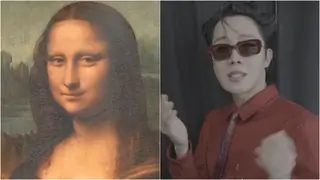Buddhist art comes out of the closet
New Delhi, July 10 (IANS) Once considered sacred religious motifs to be kept in a sanctum meant for secret rites, ancient Buddhist art is gradually coming out of the closet to join the diverse genres of Indian heritage art.
Published: Friday,Jul 10, 2009 11:28 AM GMT-06:00
New Delhi, July 10 (IANS) Once considered sacred religious motifs to be kept in a sanctum meant for secret rites, ancient Buddhist art is gradually coming out of the closet to join the diverse genres of Indian heritage art.
The Hemis Museum located at 12,000 feet above sea level, 43 km southeast of Leh in Jammu and Kashmir, is a treasure trove of more than 200 ancient Buddhist Thangka paintings and rare Gandhara icons.
It was thrown open to people in July 2007.
'The idea behind the museum was to let people understand Buddhism and its beautiful artistic legacy. I would like to collaborate with museums and institutions in India for exhibitions in metros,' Gyalwang Drukpa told IANS.
At a recent festival last week, the museum at the monastery drew throngs of visitors, most of whom were new to Buddhist and Gandhara art.
Art has been a part of Buddhism from its inception in the 6th century BC in India.
The art, mostly sculptures in bronze and gold and inlaid with precious stones, flourished in the ancient kingdom of Gandhara in the vale of Peshawar ruled by the Buddhist Kushan kings and travelled to India and southeast Asia along the Silk Road.
The museum at Hemis, which acquired its Gandhara artefacts from Tibet, Pakistan and Afghanistan and Central Asian countries over the centuries, boasts of icons of the goddess Tara, the Sakyamuni Buddha and his different incarnations, the wrathful deities of war and anger associated with Buddhism and the ancient lamas.
The Gandhara Buddha is intricate- with a matted head and robes falling around the feet in delicate drapes.
The Thangka paintings at the museum- some of which are nearly 1,000 years old- are vivid, delicate and detailed, etched on silks, canvases and coarse cotton cloth in golden and coloured inks. Primarily Tibetan and Chinese in origin, the Thangka scrolls depict Buddha in different forms and his journey across the sub-continent with accompanying inscriptions.
Join Our WhatsApp Channel
Stay updated with the latest news, gossip, and hot discussions. Be a part of our WhatsApp family now!
Join NowYour reaction
 Nice
Nice Great
Great Loved
Loved LOL
LOL OMG
OMG Cry
Cry Fail
Fail
















Post a comment